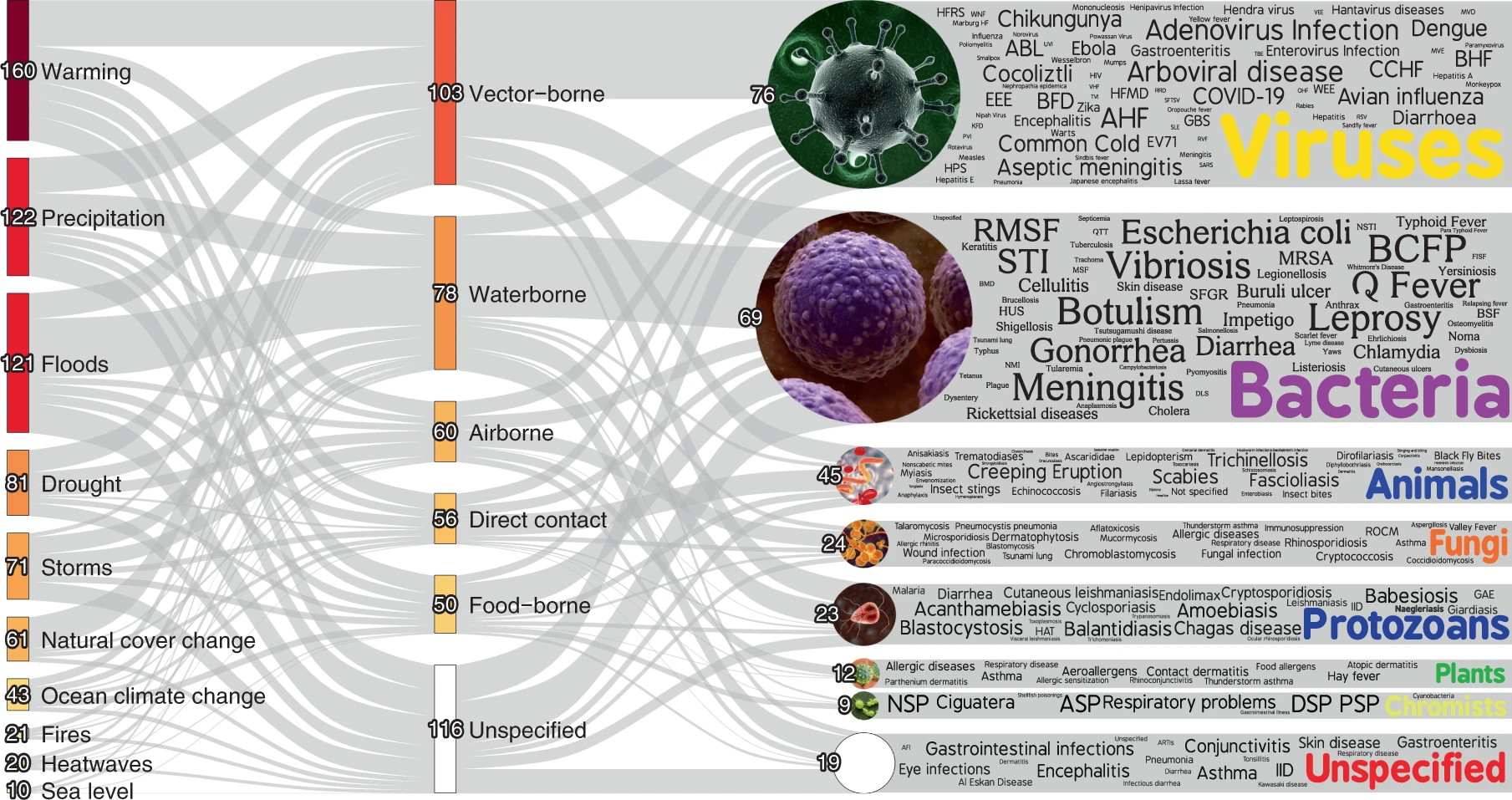Global warming has far-reaching consequences for the food chain, including new and increased food safety risks. One of the main impacts of climate change on food safety is the alteration of environmental conditions. It affects the growth, distribution, and survival of pathogens and pests. Rising temperatures, changing rainfall patterns, and extreme weather events create suitable conditions for the spread of foodborne illnesses.
Main Impact of Climatic Hazards on Pathogenic Disease


Veterinary Drugs & Pesticides
The rise of pathogenic diseases also triggers changes in farming practices, to adapt to changing climate. Rise in pesticides use and veterinary drugs is already observed, especially in regions suffering from high climate impacts and despite more and more stringent rules on their use in various regions.
This leads to two main concerns:
With higher risks of emerging zoonoses, resistance of pathogens, and alterations of vector-borne diseases and parasites in animals, an increased use of veterinary drugs is predicted. This will result in higher residue levels of veterinary drugs in foods of animal origin. This poses not only acute and chronic risks to human health, but is directly linked to an increase in antimicrobial resistance (AMR) in human and animal pathogens.
According to the WHO [4], the application of pesticides, and the subsequent residues in food, is an ongoing concern that is expected to become more prevalent due to climatic changes. Increasing temperatures, altered rainfall patterns, and shifts in pest dynamics impact pesticide use in agriculture. Higher temperatures can enhance pesticide degradation rates, reducing their efficacy. Changes in precipitation patterns can lead to runoff and increased pesticide leaching into water bodies, posing risks to aquatic ecosystems. Additionally, climate change can influence pest resistance and the need for higher pesticide doses.

references
[1] P. Battilani, 2016. Aflatoxin B1 contamination in maize in Europe increases due to climate change.
[2] FAO, 2020. Climate change: Unpacking the burden on food safety.
[3] Mora et al., 2022. Nature Climate Change 12;869-875.
[4] WHO, 2018. Food Safety, Climate change and the role of the WHO.


